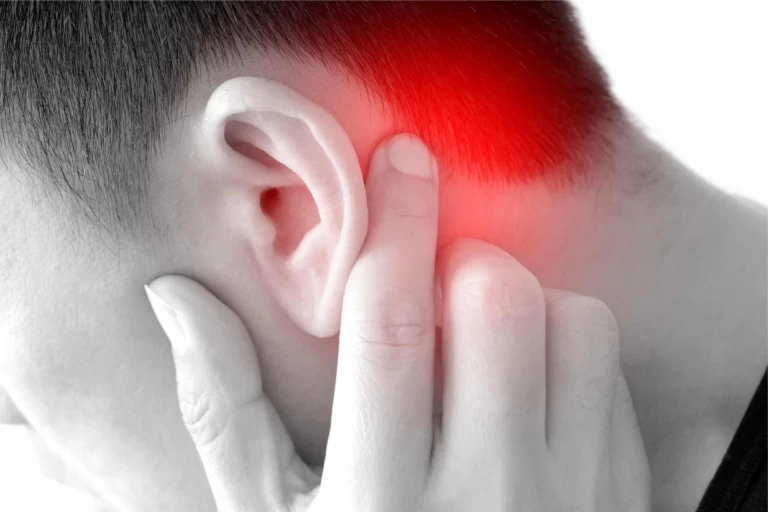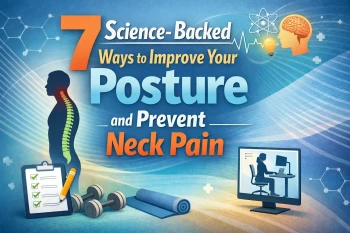
Upper Cervical Chiropractic Treatment for Tinnitus
What is Tinnitus?
Tinnitus is not a condition, but a common symptom of an underlying condition that affects 1 in 5 people. Tinnitus creates a false noise within the ear that comes from no external source. This false noise can sound like a ringing, whooshing, whistling, buzzing, humming, chirping, roaring, hissing, or even shrieking.
The phantom noise may occur in one ear or both from “inside the head” or from a distance. The sound can be constant or sporadic, steady or pulsating.
Although it is rare for tinnitus to be associated with going deaf or a serious medical problem, it can affect a person’s everyday life and become an annoyance. The phantom noise from tinnitus can seem “loud”, making it hard for the person to hear someone else over the noise. For children, it could deter their focus in school and become difficult for them to concentrate on lessons or their schoolwork.
About 10 percent of tinnitus cases result in interfering with the patient’s daily life so much that they seek out professional help. However, even if tinnitus is not drastically affecting your daily life, it is always good to mention having tinnitus to a professional if it lasts more than 24 hours or happens on occasion to see if they can help the underlying cause of your tinnitus so it does not worsen over time.
What Causes Tinnitus?
There are various causes of tinnitus. Some of the causes behind the phantom noise include the following:
- Exposure to loud noise - After a concert, listening to a music device with high volume, or fun at a social gathering, exposure to loud noise could cause tinnitus to occur shortly after. Having the ears “ring” and feeling as if the ears are clogged are common after loud noise exposure. Keep in mind, however, if a person is exposed to loud noises consistently, it can result in permanent ear damage.
- Temporomandibular joint disorder - Temporomandibular joint disorder (TMJ disorder) can bring the onset of tinnitus as the temporomandibular joint that becomes injured or inflamed is located on both sides of the head in front of each ear.
- Age-related hearing loss - As we age, hearing loss may occur – usually around the age of 60. Presbycusis, a common type of sensorineural hearing loss caused by the natural aging of the auditory system, can include tinnitus as a symptom.
- Earwax blockage - Earwax protects the ear canal by slowing the growth of bacteria and trapping dirt. Too much earwax can lead to blockage as it becomes harder for it to naturally wash away. When a blockage occurs, hearing loss or irritation can occur which may lead to tinnitus.
- Meniere’s disease - This inner ear disorder can be caused by abnormal fluid pressure in the inner ear and tinnitus can be an early sign of having Meniere’s disease.
- Inner ear cell damage - Tiny hairs in your ear move with the pressure of sound waves that cause ear cells to respond by releasing electrical signals through the auditory nerve to your brain. These signals are interpreted by the brain as sounds; however, if these hairs inside of the inner ear are damaged it could lead to random electrical signals to be “leaked” to the brain. These random electrical signals lead to the occurrence of phantom noises.
- Head or neck injury - There is a possibility that head trauma or neck trauma can affect the inner ear, hearing nerves, or brain function that is linked to your hearing. Injuries to the head or neck can cause tinnitus to develop in one ear.
- Acoustic neuroma - Acoustic neuroma is a noncancerous tumor that can cause tinnitus in one ear. It develops on the cranial nerve running from the brain to the inner ear.
How Can Tinnitus be Treated?
There are various ways to treat tinnitus from earwax removal to medication and surgery. Below is a list of the most common tinnitus treatments:
- Earwax removal - Removing impacted earwax helps reduce tinnitus symptoms.
- Treating blood vessel condition - Sometimes an underlying vascular condition can cause tinnitus. To help treat the blood vessel condition it may require medication, surgery, or a different treatment.
- Medication - Some medications can cause tinnitus and a change of medication or a reduction of the medication taken may help. Keep in mind, medication cannot cure tinnitus and only helps reduce it. All medication comes with side effects as well and although tinnitus symptoms are reduced the patient can experience drowsiness and nausea or form a habit of taking the medication consistently.
- Noise Suppression - This uses white noise to help make the phantom noises of tinnitus less bothersome. While it does not help get rid of tinnitus, it does help those with tinnitus sleep at night. Wearable devices are available for patients as well and are individually programmed to cover the frequencies you hear. The goal of the wearable device is to get the patient used to the phantom noises to where they no longer focus on them.
The above treatments for tinnitus are not guaranteed to get rid of tinnitus and instead of focusing on the underlying cause of tinnitus, the treatments focus on tinnitus symptoms. If you are looking for an all-natural treatment that focuses on tackling the underlying cause of tinnitus, upper cervical adjustments may be what you need.
How Does an Upper Cervical Treatment for Tinnitus Work?
Upper cervical treatments for tinnitus work by making small adjustments to the upper cervical spine (located right beneath the base of the skull). These adjustments release any pressure placed onto the brain stem caused by a misalignment as an upper cervical misalignment can interfere with the signals traveling back and forth from the body to the brain.
When these signals are interfered with, the body will be unable to heal and repair itself properly and could lead to the body attacking healthy cells rather than foreign invaders. When the body is unable to function properly due to mixed signals, small things such as natural drainage within the ears are affected and the placement of the bone around the ears may shift in response to the misalignment – causing other ear problems to occur with tinnitus as a symptom.
Small, precise upper cervical adjustments focus on the health of our brain stem to ensure our body can function properly. Patients have reported improvements in their current conditions in as little as one adjustment. This is because as soon as a correction is made, the brain to body communication is restored and the body begins to heal and repair as soon as it can.
The goal of an upper cervical chiropractor is to make fewer adjustments over time until the upper cervical area becomes strong enough to hold the alignment on its own.
If you or a loved one is experiencing tinnitus and are looking for a natural treatment, upper cervical adjustments can help treat tinnitus even after surgery or medication due to giving back the body’s ability to pinpoint and correct underlying causes of pain and conditions.




Leave a comment